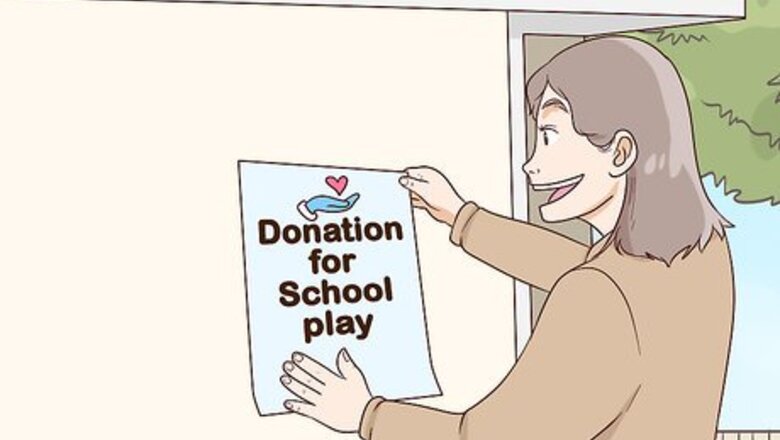
views
Asking for Donations and Fundraising
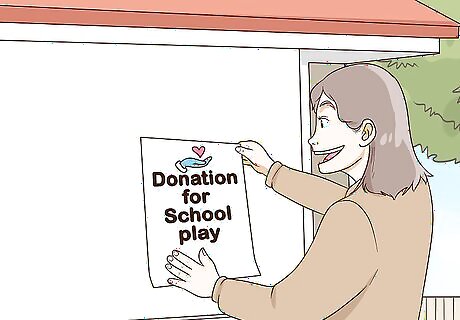
Post flyers around the school and town requesting donations. Both your school and local community can be a wealth of untapped help. Just make sure to get permission before posting the flyers. Give specific examples of some of the items needed to move forward with the set design for the production. This will make people think about specific items they might have to donate or lend rather than them having to think and come up with their own. If your school has a newsletter that is mailed or emailed out to parents, ask if the newsletter could include your flyer. Consider including the flyer on other social media sites as well.

Plan a fundraiser or a bake sale. If you and your theater crew have the time, consider hosting a fundraiser or a bake sale to raise additional funds. This is something that should be done a few months in advance of the production as it can help spread the word early that the production is in need of help.

Ask an authority figure at your school if you could borrow unused items. Your school may have a roomful of old tables, desks, and chairs that are not currently being used in a classroom. These items will be simple furnishings to use for set pieces. If that standard plastic or metal chair does not fit the decor for the scene, try covering it with a large piece of extra fabric or a blanket to create a stylish covering.

Set up a donation stand at school or sporting events. A lot of different school club activities and sporting events bring in people from the community. Setting up a small table with a donations jar and information about the upcoming play will raise funds for the production, and spread local awareness about the event. Just make sure to get the necessary permission from your school to do this. Make sure to also have flyers to hand out to people at the event. If the flyer lists specific items you need for the production, you may even get some people interested in lending furniture or clothing to the production.
Creating Budget Scenery and Backdrops

Purchase damaged or bowed wood from local lumber stores. While it might not be visibly advertised, some lumbers stores are known for significantly discounting damaged or bowed wood. If you explain that the lumber is needed for a local theater production, the lumber store might even donate some other needed supplies as well.
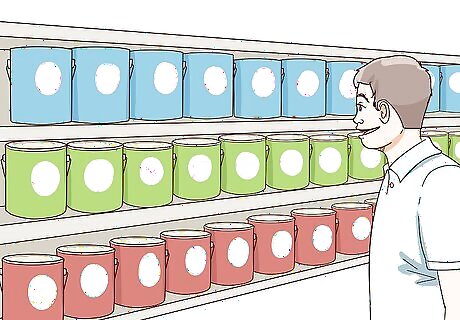
Check local hardware or paint stores for paint supplies. Very often, a paint color is mixed, but it isn't quite right for the customer. These are often available at a greatly reduced price, or for free, if asked. It is important to get a variety of colors and shades. Paint is a simple way to change the look of an item without having to hunt for something specific. Try and get the primary colors of red, blue, and yellow, along with white and black paint. This combination will allow you to create a wide variety of other colors and shades.
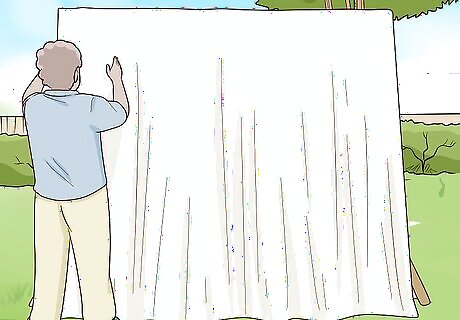
Make fabric backdrops to set the scene on the stage. Having backdrops as part of the set design can easily transform a particular scene without having to spend money on fancy lighting or projector screens. Most of the items needed to create a standard backdrop can even be found at your local hardware store. Take some old white sheets or white canvas drop cloths, and pull them taut over wooden or PVC pipe frames. Make enough backdrops to cover the back of the stage. Then enlist help from some good artists at your school to paint the needed designs on the backdrops.
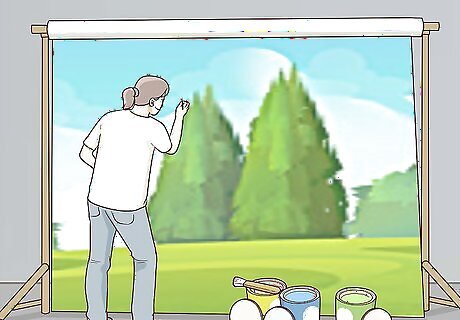
Repaint backdrops from previous productions. If you already have a few backdrops from other productions, you do not have to make new ones. Just repaint the backdrops you already have, or find a creative way to repurpose the scene that is already painted on them. For example, a generic backdrop that is painted with bricks on it could be a city scene, a castle, or an apartment. What will help distinguish the scene is what items you place around the generic backdrop.
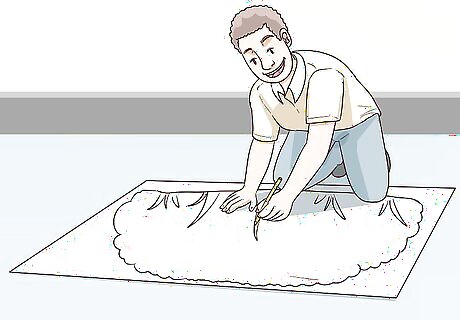
Construct scenery pieces out of plywood or sturdy cardboard. Plywood and cardboard set pieces, though flat, can be painted vibrantly to represent a tree or bush, and are light enough to be moved on and off stage quickly. These kinds of set pieces are inexpensive to make, especially if the plywood or cardboard was found or donated, and can often be reused in future productions. Remember that objects just need to look like and suggest what they are, and not necessarily be a three-dimensional representation of what they are.
Making Inexpensive Costumes and Props

Go to your local thrift store for discounted clothes and furniture items. Whether your production is in need of simple costumes or statement pieces, see what your local thrift store has to offer. Places like Goodwill or Salvation Army may even have furniture pieces available to purchase at a bargain price. Ask if your local thrift store will consider loaning items from their store. This would be especially helpful if your school is planning on having more productions in the future. The thrift store may just ask for any borrowed items to be returned in good condition, and recognition in the program pamphlet for the donation.

Visit your local dollar store to purchase items that can be used as props. The dollar store is a great place to find inexpensive props and other crafting items. If you go during a certain season or holiday, you will even be able to pick up seasonal items and decorations for very little money. Check out the plastic tableware and tablecloths to spruce up a kitchen scene, or peruse through the plastic greenery to assemble fake potted plants and bouquets to liven up a garden scene. Don’t be afraid to use your imagination and get crafty with some hot glue. For example, if you combine some white round gift boxes, ribbon, and some fake flowers, you can create a layered wedding cake prop.

Design props that can have more than one use. Having props that serve more than one purpose will save you money on the current production, and any future productions as well. Budgeting for props that have multiple uses may also allow you to splurge on props or set pieces that did not make the initial cut as being important. Get creative with reusing big props as well as small props. A fake pine tree could serve as a holiday tree, or it could represent a tree in a park scene that the actors have a picnic under. A stack of books can sit on a desk to portray an office space, or actors can place the books on a shelf to represent a library. It is never too late or too early to start a prop collection. This will make planning your next production easier. Make a catalogue or a list of what is available in storage to avoid purchasing or creating duplicate props.
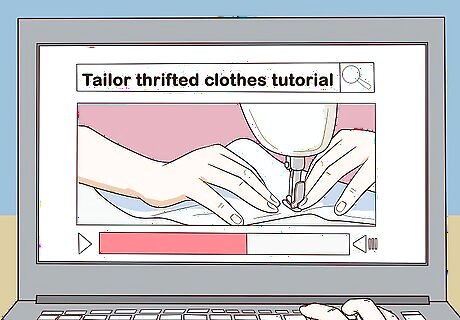
Use online tutorials to learn how to tailor thrifted clothes into costumes. While it is nice to have a couple of people involved with the production who know how to sew or do alterations, this might not be the case. The internet is filled with video and written tutorials on how to transform drab thrifted items into an entirely different outfit.




















Comments
0 comment